
Nunsploitation is a subgenre of exploitation film which had its peak in Europe in the 1970s. These films typically involve Christian nuns living in convents during the Middle Ages.
Claudio Fragasso is a film director and screenwriter. Fragasso first attempted to make art films in the early 1970s, then became a screenwriter in the Italian film industry in the mid-1970s. Fragasso met director Bruno Mattei, which led to a ten-year partnership from 1980 to 1990 during which the two worked together closely on films, with Fragasso's contributions often going uncredited. Fragasso's wife Rossella Drudi was also a screenwriter and collaborated with him on a number of projects. Fragasso would later go on to write and direct his own films in the 1980s, including Monster Dog with rock musician Alice Cooper and After Death. Fragasso directed Troll 2 in 1989, which was later the topic of Best Worst Movie, a documentary film that discussed Troll 2's fandom.
Bruno Mattei was an Italian film director, screenwriter, and editor who directed exploitation films in many genres, including women in prison, nunsploitation, zombie, mondo, cannibal, and Nazisploitation films. Mattei's films often followed popular genre trends of the era. Mattei continued work as a director primarily in the Philippines until his death in 2007, just before he was to enter production on his fifth Zombie film.

Hell of the Living Dead is a 1980 Italian horror film directed by Bruno Mattei. The film is set in a laboratory in Papua New Guinea that releases a dangerous chemical, turning the technicians and locals into zombies. A French news reporter and her crew land on the island to investigate.
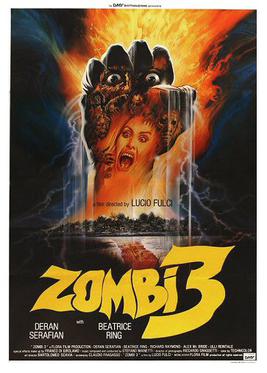
Zombi 3 is a 1988 Italian horror film directed by Lucio Fulci and Bruno Mattei and starring Deran Sarafian, Beatrice Ring, and Ottaviano Dell'acqua. The film is an in-name-only sequel to Fulci's Zombi 2. The film is about a group of scientists at a top-secret research facility who are working on a biological weapon called Death One, which mutates and kills the living creatures and reanimates the dead. The weapon is leaked out of the facility, which leads to a spread of infection among soldiers and touring people in the area.

Killer Nun is a 1979 Italian nunsploitation horror film directed and co-written by Giulio Berruti, co-written by Alberto Tarallo, and starring Anita Ekberg, Joe Dallesandro, Lou Castel, and Alida Valli. Its plot follows a nun who, after recovering from brain surgery, grows increasingly paranoid that her health is again declining; she begins indulging in opioids from the hospital in which she works, and spirals into addiction and madness with violent consequences. The film is loosely based on the true story of a Cécile Bombeek, a middle-aged nun who committed a series of murders in a geriatric hospital in Wetteren, Belgium in 1977.

Sacred Flesh is a 1999 British nunsploitation erotic horror film. It is set in an indeterminate past, and consists of a series of loosely connected vignettes that depict pseudo-lesbian sexuality and some sado-masochistic activity.

Monster Dog is a 1986 Spanish horror film directed by Claudio Fragasso and starring Alice Cooper and Victoria Vera. Cooper plays a rock star who returns to his hometown, which has been plagued by wild dog attacks.
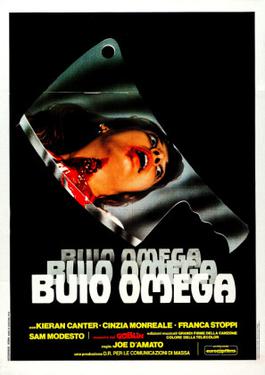
Beyond the Darkness is a 1979 Italian exploitation horror film directed by Joe D'Amato. It follows Francesco Koch, an orphaned taxidermist who inherits a house in the woods where he lives with his housekeeper Iris, who is determined to become the new owner. After Iris kills his girlfriend Anna with a voodoo curse, Francesco steals her corpse from the local cemetery. He then commits murders connected to his enduring passion for her. A local undertaker investigates and meets Teodora, Anna's twin sister.

Images in a Convent is a 1979 sexploitation film by Italian cult filmmaker Joe D'Amato starring Paola Senatore, Marina Hedman and Donald O'Brien.
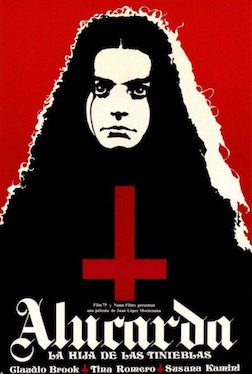
Alucarda is a 1977 English-language Mexican supernatural horror film directed by Juan López Moctezuma, and starring Tina Romero, Claudio Brook, Susana Kamini, and David Silva. A loose adaptation of Carmilla (1872), it revolves around two teenage orphan girls living in a Catholic convent, who unleash a demonic force and become possessed.
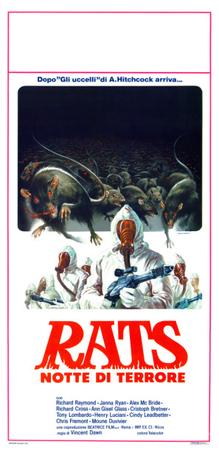
Rats: Night of Terror is a 1984 post-apocalyptic horror film directed by Bruno Mattei about a biker-gang that find themselves trapped in an abandoned research lab fighting for their lives against hordes of bloodthirsty killer rats.

The Forbidden Room is a 1977 thriller film directed by Dino Risi. It is based on the novel Un'anima persa by Giovanni Arpino. The film was co-production between Italy and France by Dean Film and Les Productions Fox Europa.

The Awakening is a 1956 Italian comedy drama film directed by Mario Camerini. For this film Anna Magnani was awarded with her fifth Silver Ribbon for best actress.
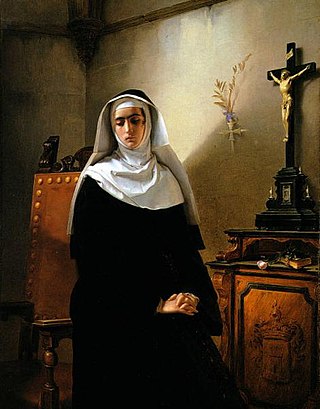
Sister Virginia Maria was an Italian nun. She gave birth to two children fathered by a local aristocrat, and had connived in the murder of another nun to cover up the affair. This took place in Monza, in northern Italy, at the beginning of the 17th century. Following this scandal she became widely known as the Nun of Monza. Her life inspired one of the characters in Alessandro Manzoni's novel The Betrothed, which has also been dramatized several times. Mario Mazzucchelli's book The Nun of Monza (1963) presents a nonfictional account of Sister Viriginia's life, drawing upon historical records.

Story of a Cloistered Nun is a 1973 nunsploitation film directed by Domenico Paolella and starring Eleonora Giorgi, Catherine Spaak, Suzy Kendall, Martine Brochard, Tino Carraro, and Umberto Orsini. The film claims to be inspired by real events that occurred in the 16th-century at the Certosa di San Giacomo.

Devils of Monza is a 1987 Italian historical erotic-drama film directed by Luciano Odorisio. It is based on real-life events related to Marianna de Leyva, better known as Sister Virginia Maria, "The Nun of Monza", whose story was made famous by Alessandro Manzoni's novel The Betrothed.

White Apache is a 1986 Western film directed by Bruno Mattei. The film was an Italian and Spanish co-production between Beatrice Films and Multivideo.
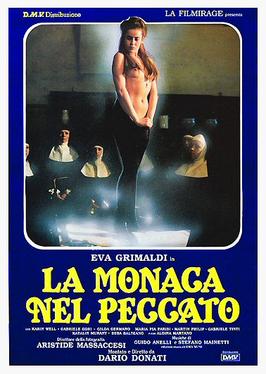
Convent of Sinners, is a 1986 Italian nunsploitation erotic film directed by Joe D'Amato. D'Amato directed, photographed and edited the film. The Rene Rivet screenplay was based on the novel "La Religeuse" by Denis Diderot.
Che Dio ci aiuti is an Italian TV series that has been broadcast in Italy since December 15, 2011.
















